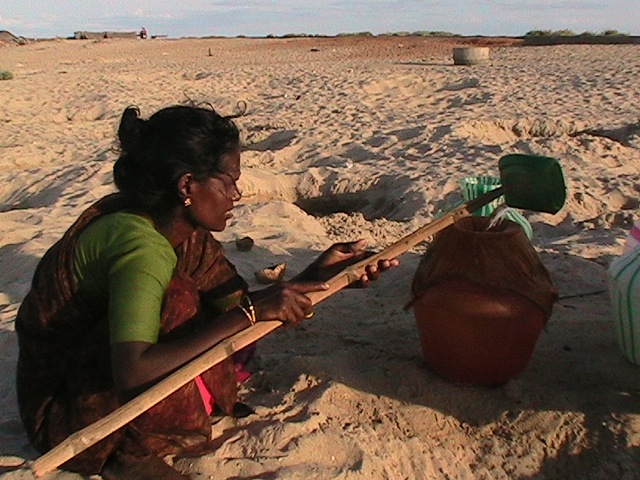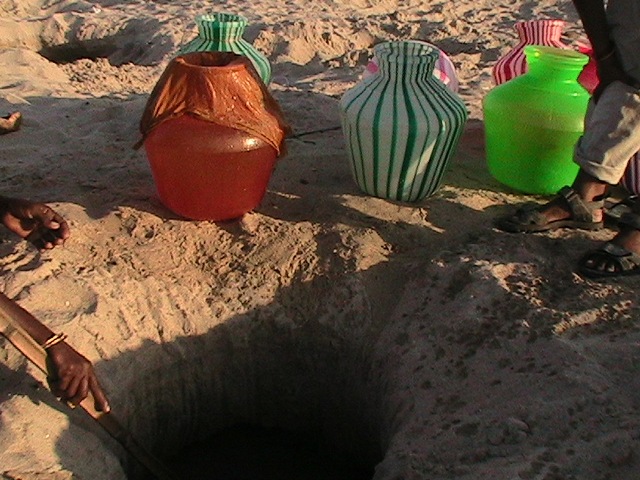Lately there have been some conversations about water sector and microfinance, about bringing in microfinance to address water issues like access to clean drinking water, household water distribution and supply, associated problems of sanitation like underground drainage, and utilities.

Woman Drawing Drinking Water in Dhanuskodi

The Pit Dug In Sand
It could be worthwhile to explore this thought, as India, today has grown a very robust microfinance base. If the Micro-finance Institutions (MFIs) find merit in this idea, this could change the landscape of water based problems that the Indian towns and villages face, at the level of access and distribution. Given the fact that this approach would only work if the trunk infrastructure is in place MFIs may need to run some pilot projects before they arrive at the exact set of problems and thus an appropriate microcredit program for it.
Women collecting water from a tanker in Vellore
An old lady and a child waiting in front of public standpost
To begin with, this can perfected in the cities and towns where the existing infrastructure is functional but plagued with inefficiencies and suffer chronic quality issues.
I am trying to put together some of the early initiatives in this space and hope that this list would only grow bigger here on. In an extensive study of over 800 households in Hyderabad, Jenna Davis of Stanford University and Garry White from Water Partners International conclude that even if provided with market (not concessional) rates of financing, a substantial proportion of poor households would invest in water and sewer network connections. Their report Improving access to water supply and sanitation in urban India: microfinance for water and sanitation infrastructure development details the methodology and findings of the study.
The water supply characteristics of the households surveyed in Hyderabad (from the report) shows the availability of various water utilities in the study area.
Of particular importance is the fact that this is the first known investigation into the potential for microcredit in addressing the demand for water and sanitation in low income households in developing countries.
Emily Smith in her post at Next Billion puts together the context more concisely -
“Philanthropic capital is needed to extend an initial pipeline into slums, and then the focus turns to commercial capital in partnership with MFIs to ensure that people have the opportunity to take loans out and purchase products like water connectors to the nearest pump. The ratio of commercial to philanthropic capital obviously varies from region to region, with areas where microfinance penetration is higher showing higher ratios.”
/articles/microfinance-water-how-will-it-work